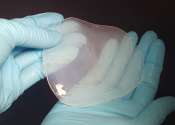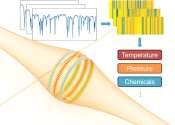Bacteria make thermally stable plastics similar to polystyrene and PET for the first time
Bioengineers around the world have been working to create plastic-producing microbes that could replace the petroleum-based plastics industry. Now, researchers from Korea have overcome a major hurdle: getting bacteria to ...









